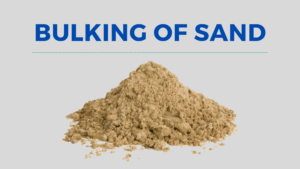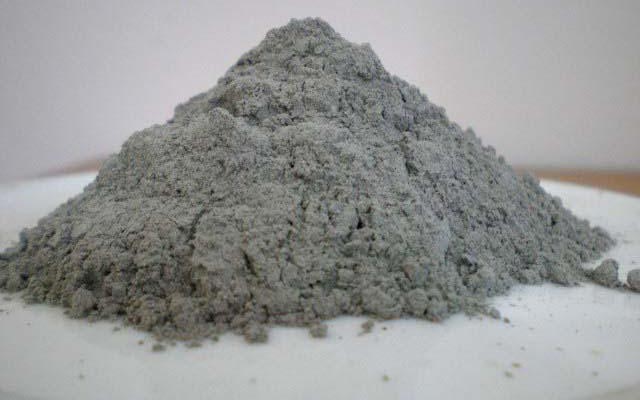
The increase in the volume of sand due to the presence of water is termed as bulking of sand. It occurs due to the formation of a thin layer of water between particles of sand which pushes the sand particles apart.
The bulking of sand depends upon:
- Moisture in sand
- Fineness of sand
Effect of Moisture Content on bulking of Sand
- The bulking of sand increase with the increase in moisture content up to a certain level and then begins to decrease with further addition of water.
- Bulking of sand is maximum when the moisture content is about 4-5 %
- With a moisture content of around 10 % in the sand, the bulking can be as high as 40 %.

Effect of Fineness of Sand on bulking
- Bulking of sand is more in fine sand due to the large surface area.
- Maximum bulking for fine sand is observed on higher moisture content than coarse sand.
How does the Bulking of Sand effects the concrete mix?
Sand is an important part of concrete mix. It acts as a filler in concrete and provides density and workability to the concrete.
Since the volume of the sand increases due to bulking, it occupies more space than dry sand. It will cause a deficiency of sand in the concrete mix. We should make corrections for bulking if sand is measured by volume. Otherwise, the concrete mix will be richer than the specified mix.
The yield of concrete will also be reduced. It is necessary to increase the volume of sand by bulking percentage to get the same concrete.
Correction for bulking of sand is not required when sand is measured by mass.
How to find Bulking of Sand?
This field method is based on the fact that there is no bulking when the sand is saturated.
Procedure:
-
- Pour the moist sand in a 250 cc measuring cylinder and note the height of sand h1
- Add water till the level of water is above the sand and stir it well.
- You will observe that the sad surface level is below its original level. Measure the height of sand h2 in submerged condition
- Bulking of sand formula = (h1 – h2)/ h2 * 100 percent

